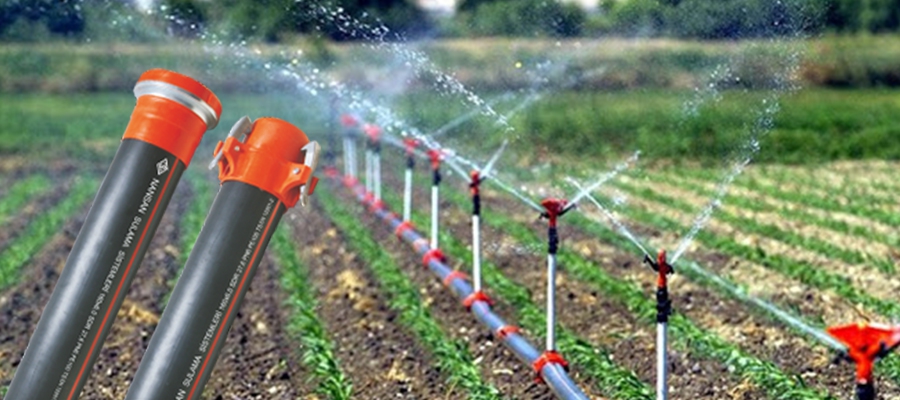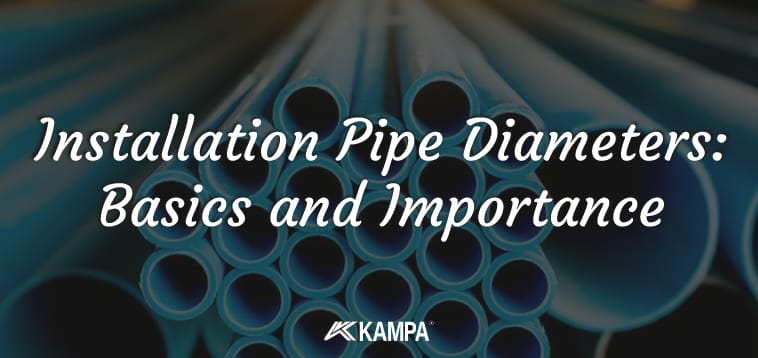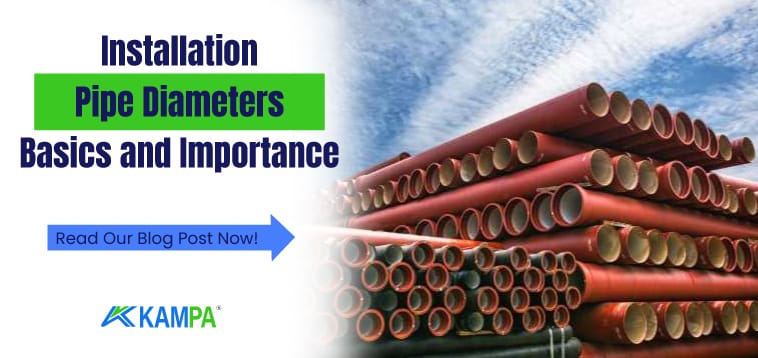Importance of Pipe Diameter in Water Transportation= Diameter – Quantity Table
The effect of pipe diameter on water carrying capacity is a fundamental aspect of hydrodynamic and engineering principles. The larger the diameter, the greater the amount of water that can pass through the pipe. Diameter – Quantity Table with you.
This relationship results from the direct connection between the velocity of the water and the pipe cross-sectional area. For example, a 1-inch diameter pipe can carry more water than a 1/2-inch diameter pipe. However, this is only true if the velocity of the water remains constant.
Pipe Diameter – Quantity Table
| Pipe Diameters (Inch) | Pipe Diameters(mm) | Water Transportation Capacity(Ton) |
|---|---|---|
| 3/8” | 16 | 0,6 |
| 1/2” | 20 | 0,9 |
| 3/4” | 25 | 1,6 |
| 1” | 32 | 3,0 |
| 1.1/4” | 40 | 5,0 |
| 1.1/2” | 50 | 8,0 |
| 2” | 63 | 18 |
| 2.1/2” | 75 | 25 |
| 3” | 90 | 40 |
| 4” | 110 | 70 |
Another important factor affecting the water transport capacity is the pipe material. Pipes with smooth inner surfacesallow water to flow with less friction, which increases the velocity of the water and therefore the transport capacity. In addition, the chemical and physical properties of the pipe material affect the quality of the water and the possible risk of contamination during transportation.
To understand the relationship between pipe diameter and water carrying capacity, it is necessary to know the concept of water flow rate. Water flow rate is the volume of water passing through the pipe per unit timeand is usually expressed in liters per second (L/s) or cubic meters per hour (m³/h). Water flow rate is directly related to pipe diameter and water velocity. The larger the pipe diameter, the more water can be transported under the same pressure.
Another factor to consider in the water conveying process is the pipe length. In long pipes, the frictional resistance that water has to overcome is greater, which increases the energy required for pumping. Therefore, it is important to strike a balance between pipe length and diameter.
The velocity of the water in the pipe is also an important factor. Too high velocities can damage pipe walls and fittings and reduce water quality. On the other hand, too low velocities can lead to sediment build-up and bacterial growth inside the pipe. The ideal water velocity varies depending on the pipe material, diameter and the requirements of the application.

Finally, the pressure drop in the pipe system is also a critical factor for water carrying capacity. The pressure drop is caused by the resistance encountered by the water as it moves through the pipe.
The pressure drop depends on factors such as pipe diameter, length, velocity, viscosity and roughness. An optimized pipe system should provide maximum water carrying capacity with minimum pressure drop.
The amount of water that can be transported per hour according to the pipe diameter and a detailed examination of the factors that are important for water transportation are vital for designing an efficient and safe water transportation system. Those who want to learn more about this subject can examine our website in detail. You can also review the Diameter – Quantity Table again.

The factors you need to consider to increase water handling capacity include a number of parameters that directly affect the efficiency and reliability of water handling systems. Here are some of the key factors you need to consider to increase water conveyance capacity:
- Pipe Diameter and Cross Section: Pipe diameter is the most significant determinant of water carrying capacity. Larger diameter pipes have the potential to carry more water. However, larger diameter pipes can also cost and weigh more.
- Pipe Material: Pipe material affects the coefficient of friction and therefore the flow rate of water. Materials with smooth internal surfaces allow water to flow with less resistance and increase the carrying capacity.
- Pipe Length: Long pipelines increase the frictional resistance that water must overcome. This can increase pumping costs and energy consumption. For long distances, the pipe diameter needs to be optimized.
- Pressure and Height Differences: In water transportation systems, pressure is the main force that keeps water moving. Height differences also affect gravity flow and this is particularly important in areas with elevation changes.
- Water Velocity: Water velocity affects the risk of wear and erosion inside the pipe. Excessive velocities can damage pipe walls and lead to water loss. The optimal speed varies depending on the pipe material and diameter.
- Temperature: The viscosity of water varies with temperature. Lower viscosity means higher flow rate and therefore higher carrying capacity.
- Pipe Joints and Joints: Every connection and joint in the piping system is a potential point of resistance. Quality connections and a minimum number of joints improve water flow and increase capacity.
- Maintenance and Cleaning: Regular maintenance and cleaning helps prevent deposits and blockages inside the pipe. This maintains and increases the water carrying capacity.
- Pump Selection and Capacity: An effective pump selection ensures that water is transported at the desired speed and pressure. Pump capacity directly affects the overall performance of the system.
- Topography and Layout: The topography of the Project area influences the design of the pipeline and therefore its water carrying capacity. Flat or sloping terrain requires different design and engineering approaches.
Each of these factors should be thoroughly evaluated to increase the water carrying capacity. Maximum values should also be examined using the Diameter – Quantity Table. To design an optimal water conveyance system, it is important to understand how these factors interact together and apply appropriate engineering solutions.
Working with an engineering team experienced in system design will help to balance these complex factors and achieve the most efficient outcome.
Click here to view and order submersible pump pipes in different sizes. Click here for detailed information about installation pipe diameters.

